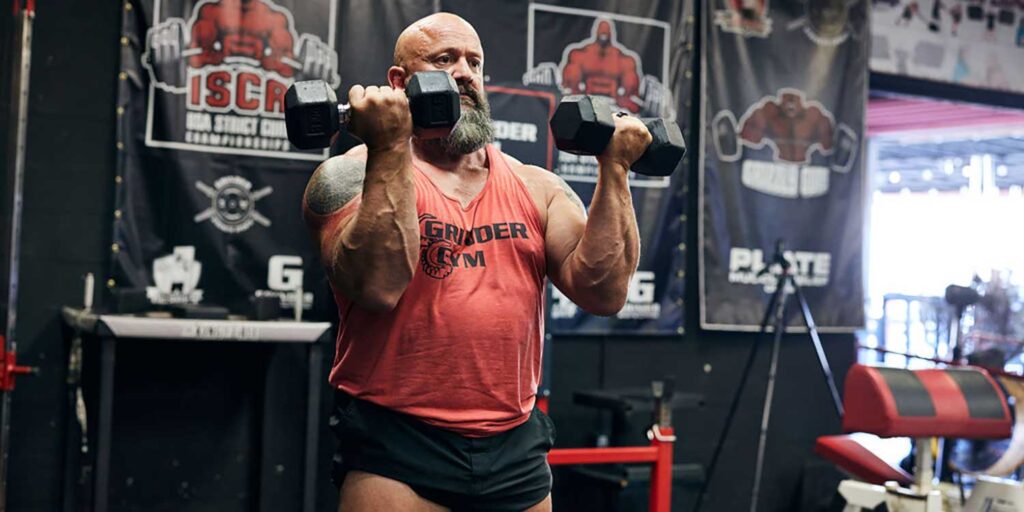
Bodybuilding training, when tailored specifically for hypertrophy, focuses on maximizing muscle size and definition. This goal is achieved through carefully structured training systems that emphasize progressive overload, volume, and muscle isolation. Here’s an in-depth look at the principles and methods behind effective hypertrophy-oriented bodybuilding training.
Key Principles of Hypertrophy Training
- Progressive Overload: This foundational principle involves gradually increasing the stress placed on the muscles to stimulate growth. This can be achieved by adding weight, increasing the number of repetitions or sets, or improving exercise intensity.
- Volume: Higher training volume is crucial for hypertrophy. Volume is typically measured by the total number of sets and repetitions performed for each muscle group. Bodybuilding routines often involve multiple sets of each exercise to ensure sufficient muscle fatigue.
- Intensity: Training intensity, defined by the amount of weight lifted relative to one’s maximum capacity, plays a significant role in muscle growth. For hypertrophy, moderate to high intensity with a rep range of 6-12 is commonly recommended.
- Muscle Isolation: Bodybuilding workouts often include exercises that target specific muscles to ensure balanced development and symmetry. Isolation exercises, such as bicep curls or leg extensions, are integral to these routines.
- Time Under Tension (TUT): This principle focuses on the duration that a muscle is under strain during a set. Longer TUT, achieved through slower, controlled movements, can enhance muscle fiber recruitment and growth.
- Frequency: The frequency of training each muscle group is also crucial. While traditional bodybuilding splits focus on once-a-week per muscle group, current research supports higher frequency training for more consistent growth stimuli.
Effective Training Systems for Hypertrophy
- Split Routine: This is a classic bodybuilding approach where different muscle groups are trained on different days. Common splits include:
- Push/Pull/Legs: Divides the workout into pushing movements, pulling movements, and leg exercises.
- Upper/Lower Split: Alternates between upper body and lower body workouts.
- Body Part Split: Focuses on individual muscle groups each day, such as chest day, back day, etc.
- Full-Body Workouts: This system involves training all major muscle groups in a single session, multiple times per week. While less common in traditional bodybuilding, it can be effective for maintaining muscle protein synthesis and overall volume.
- German Volume Training (GVT): Known as the “10×10” method, GVT involves performing 10 sets of 10 repetitions for a single exercise per muscle group. This high-volume approach is intense and demands significant recovery.
- Pyramid Training: This method involves increasing (ascending pyramid) or decreasing (descending pyramid) the weight with each set while adjusting the number of repetitions. It’s effective for hitting different muscle fibers and promoting hypertrophy.
- Supersets and Giant Sets: These involve performing two or more exercises consecutively without rest. Supersets target opposing muscle groups or the same muscle group, while giant sets include three or more exercises for the same muscle group. These techniques increase intensity and volume while reducing workout time.
- Drop Sets: This technique involves performing a set to failure, then reducing the weight and continuing for additional repetitions. Drop sets are excellent for maximizing muscle fatigue and growth.
Nutrition and Recovery
For hypertrophy, training is only part of the equation. Proper nutrition and recovery are essential to support muscle growth and repair. Key aspects include:
- Protein Intake: Adequate protein is crucial for muscle repair and growth. Aim for 1.6 to 2.2 grams of protein per kilogram of body weight daily.
- Caloric Surplus: Consuming more calories than you burn supports muscle growth. Focus on nutrient-dense foods to provide the necessary energy and nutrients.
- Rest and Sleep: Muscle growth occurs during recovery periods. Ensure sufficient rest between workouts for the same muscle group and prioritize quality sleep to optimize recovery and growth.
- Supplementation: While not essential, supplements like whey protein, creatine, and branched-chain amino acids (BCAAs) can support hypertrophy goals when combined with a balanced diet.
Conclusion
Bodybuilding training systems designed for hypertrophy are centered around principles of progressive overload, volume, and muscle isolation. By employing effective training routines like split routines, German Volume Training, and incorporating techniques like supersets and drop sets, bodybuilders can optimize their workouts for maximum muscle growth. Coupled with proper nutrition and recovery, these methods provide a comprehensive approach to achieving hypertrophy and building a well-defined, muscular physique.


